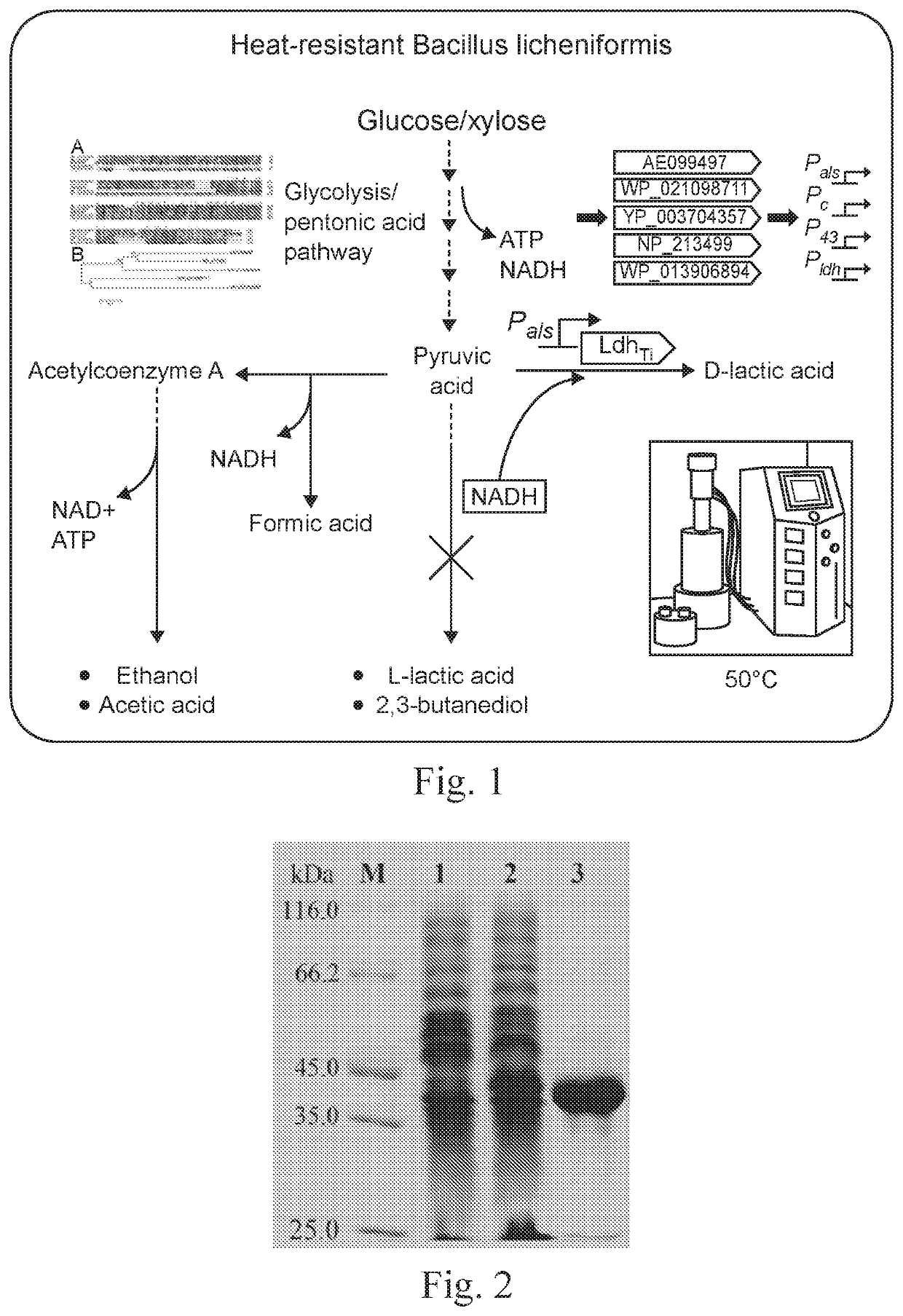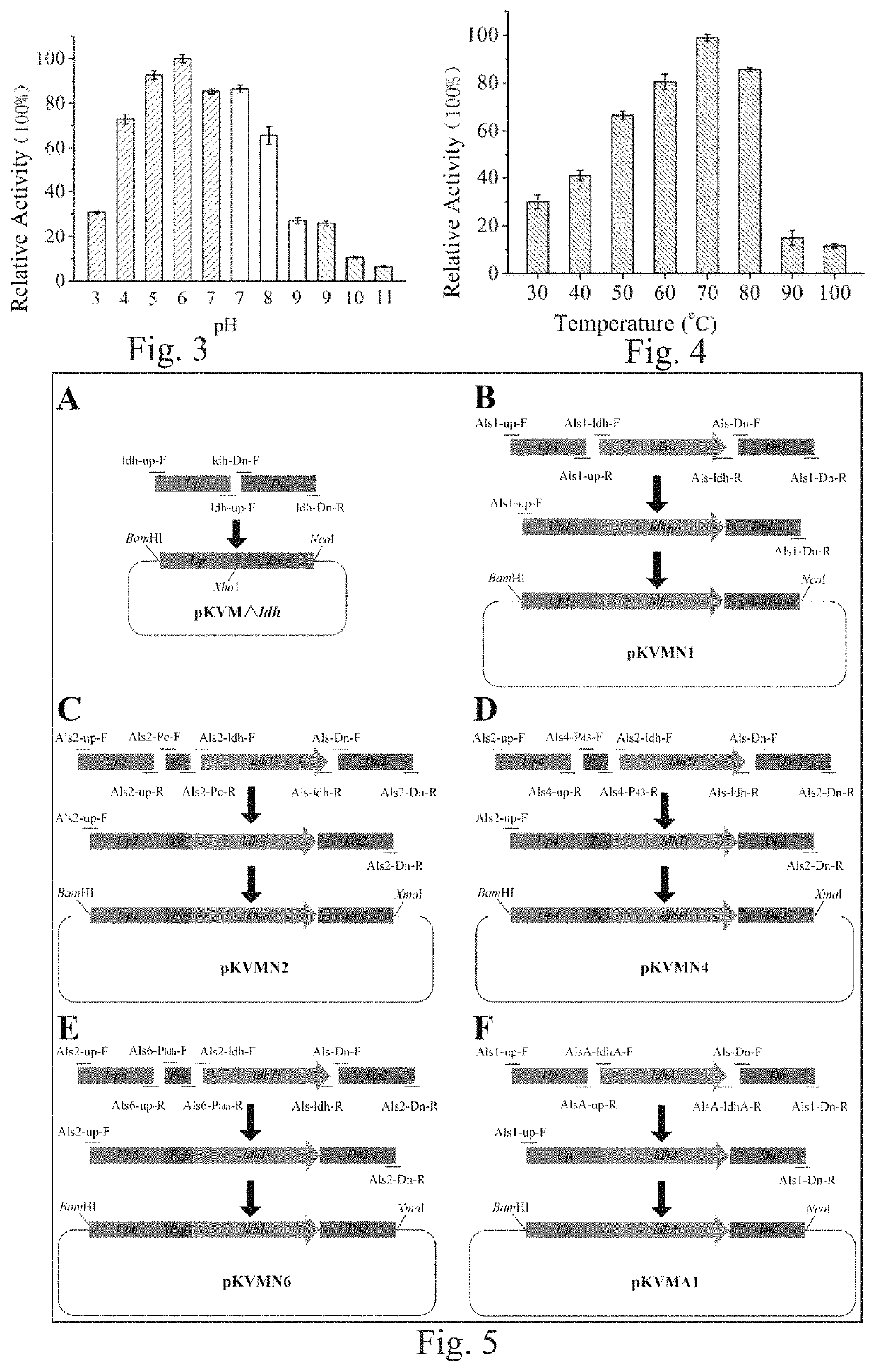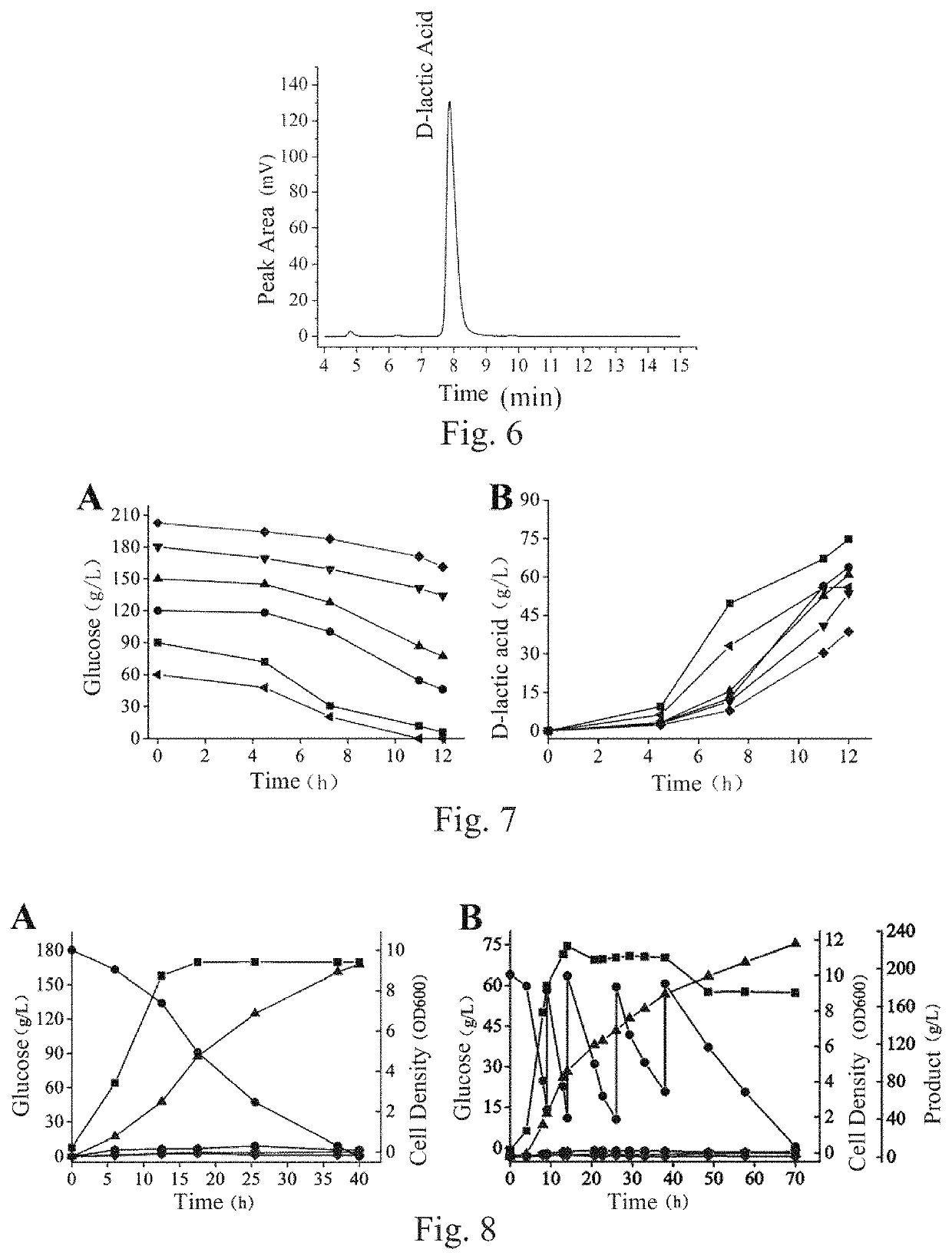D-lactate dehydrogenase, engineered strain containing D-lactate dehydrogenase and construction method and use of engineered strain
a technology of dlactate dehydrogenase and engineered strain, which is applied in the field of dlactate dehydrogenase, engineered strain containing dlactate dehydrogenase and construction method and use of engineered strain, can solve the problems of high cost, poor heat stability of d-lactic acid, and inability to meet the needs of industrial production, etc., and achieves high yield and poor heat stability. stability, the effect of high cost of the existing
- Summary
- Abstract
- Description
- Claims
- Application Information
AI Technical Summary
Benefits of technology
Problems solved by technology
Method used
Image
Examples
embodiment 1
D-Lactate Dehydrogenase Gene and Protein Thereof
[0138]1. Obtaining of D-lactate Dehydrogenase LdhTi Gene
[0139]By using D-lactate dehydrogenase NP_213499 in Aquifex aeolicus VF5 as a template in NCBI, a protein WP_013906894 which had a similarity of 38% with NP_213499 and was possibly D-lactate dehydrogenase was obtained through comparison, and a sequence thereof was as expressed by SEQ ID No. 1. Through further search, it was found that this protein existed in Thermodesulfatator indicus DSM 15286, a corresponding nucleotide sequence thereof was a complete open reading frame, as expressed by SEQ ID No. 2, with a length of 978 bp, coding a protein consisting of amino acid residues expressed by SEQ ID No. 1, and the protein was named as LdhTi. After optimization according to the codon of E. coli K12, a synthesis process was performed by a PCR synthesis method, and by adopting primers shown in Table 1 in which the primers served as templates for each other, thereby synthesizing a nucleo...
embodiment 5
of an Optimal Strain in Embodiment 4 after Blocking of Byproduct Production
[0209]This embodiment was performed in a 5 L full-automatic fermentation tank, the used strains included BN11, BN12 (with a pathway for producing byproduct formic acid blocked), BN13 (with pathways for producing byproducts formic acid and ethanol blocked) and BN14 (with pathways for producing byproducts formic acid, ethanol and acetic acid blocked), and components of various used culture mediums were as follows:
[0210]Slant culture mediums, seed culture mediums and fermentation culture mediums were the same as that in Embodiment 4.
[0211]A method for producing D-lactic acid through fermentation was the same as that in Embodiment 4.
[0212]After fermentation was ended, supernatant of the fermentation liquid was taken and analyzed for concentrations of D-lactic acid, byproducts and total reducing sugar through HPLC, and sugar-acid conversion rate was calculated (Table 5), wherein conversion rate (%)=yield of lactic...
embodiment 6
of Fermentation Conditions of Optimal Strain in Embodiment 4
[0215]This embodiment was performed in a 5 L full-automatic fermentation tank, the used strain was BN11, and components of various used culture mediums were as follows:
[0216]Slant culture mediums and the seed culture mediums were the same as that in Embodiment 4.
[0217]Each liter of fermentation culture mediums contained: 1) 90 g of glucose, 5-10 g of yeast powder, 2-8 g of peptone and balance of water when the optimal fermentation pH was determined, wherein pH was respectively regulated to 6.0, 6.5, 7.0, 7.5 and 8.0; and 2) 5-10 g of yeast powder, 2-8 g of peptone, 60 g, 87 g, 122 g, 148 g, 180 g and 202 g of glucose and balance of water in order to determine capabilities of the strain in producing D-lactic acid in culture mediums with different concentrations of glucose.
[0218]The method for producing D-lactic acid through fermentation in this embodiment comprised the following steps:
[0219](1) Slant culture: same as that in...
PUM
| Property | Measurement | Unit |
|---|---|---|
| temperature | aaaaa | aaaaa |
| temperature | aaaaa | aaaaa |
| temperature | aaaaa | aaaaa |
Abstract
Description
Claims
Application Information
 Login to View More
Login to View More - R&D
- Intellectual Property
- Life Sciences
- Materials
- Tech Scout
- Unparalleled Data Quality
- Higher Quality Content
- 60% Fewer Hallucinations
Browse by: Latest US Patents, China's latest patents, Technical Efficacy Thesaurus, Application Domain, Technology Topic, Popular Technical Reports.
© 2025 PatSnap. All rights reserved.Legal|Privacy policy|Modern Slavery Act Transparency Statement|Sitemap|About US| Contact US: help@patsnap.com



